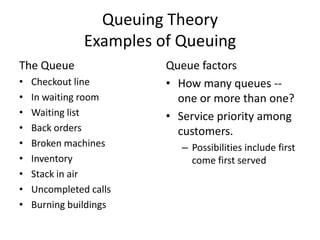
Luckily, since then queues became more organized.Īs any other part of our lives, waiting lines evolved over time.

Most likely, these “waiting lines” resembled animal queuing, where tribe hierarchy determines the order. When hunters brought fresh meat, everyone had to wait for their turn to take a bite out of it. Some historians say that queues date back to primitive times. But first, a history lesson.ĭespite what you may think, waiting lines have been with us since the beginning of time. Queue management is a set of principles aimed at controlling customer flow and streamlining the queuing experience.Īlthough usually we only take into account the effects of long queues on regular visitors, everybody - from customers to manager and top-level administration - benefits from proper queue management. The bigger the difference between the demand and supply, the longer the queue. When there are more people queuing up than there are clerks ready to service them, we get queues. In economic terms, it’s even simpler - a queue is a textbook case of demands exceeding supply. When we think of queues and waiting lines, the words that spring to mind are “annoyance”, “lots of people” and “waste of time”, mostly because of long wait time.īut let’s put it scientifically: What is a queue? A queue is a line of people waiting for the moment a particular service or product becomes available. The benefits of a queue management systemĬhapter 1: An introduction to queue management.
#Queuing definition free
Feel free to read everything from top to bottom, or skip to the chapter that interests you the most. To make this guide more digestible, it is divided into 6 chapters.
#Queuing definition how to
This post will give you the complete rundown of queue management: from the basics of how it works to actionable tips on how to implement and start using a queuing system in your business. How does a queue management system and waiting line models work? How do you pick one? How do you make the most out of your business by simply arranging waiting lines? While this may not seem like a great benefit for the typical home user, it can be a helpful tool for businesses where many people share one printer.What is Queue Management? The Definitive Guide to Queuing Systems įor something as essential to businesses as queue management, there aren’t that many guides to queuing and best queue management systems.Īfter all, how complicated can queue management or waiting line management be? You get customers to stand in line and you manage them, right?īut if you’re looking for ways to engage your customers, keep your staff sastisfied and motivated, and build up your business image, the best path to success lies through queue management.
#Queuing definition software
Most printers today come with software that allows you to manually sort, cancel, and add jobs to the printer queue. However, if there are jobs already in the queue, the new document will be added to the list and printed when the others have finished. If there are no jobs currently in the queue, the document will be printed immediately. When you decide to print a document, it is sent to the printer queue.

For example, when the CPU finishes one computation, it will process the next one in the queue.Ī printer queue is a list of documents that are waiting to be printed. Computer programs often work with queues as a way to order tasks. When a job is sent to a queue, it is simply added to the list of jobs. A queue is a list of jobs that are awaiting to be processed. It is not pronounced "kay" or "kyoo-ee" like some people seem to think it is. To avoid any confusion, this term is pronounced exactly like the letter "Q".


 0 kommentar(er)
0 kommentar(er)
